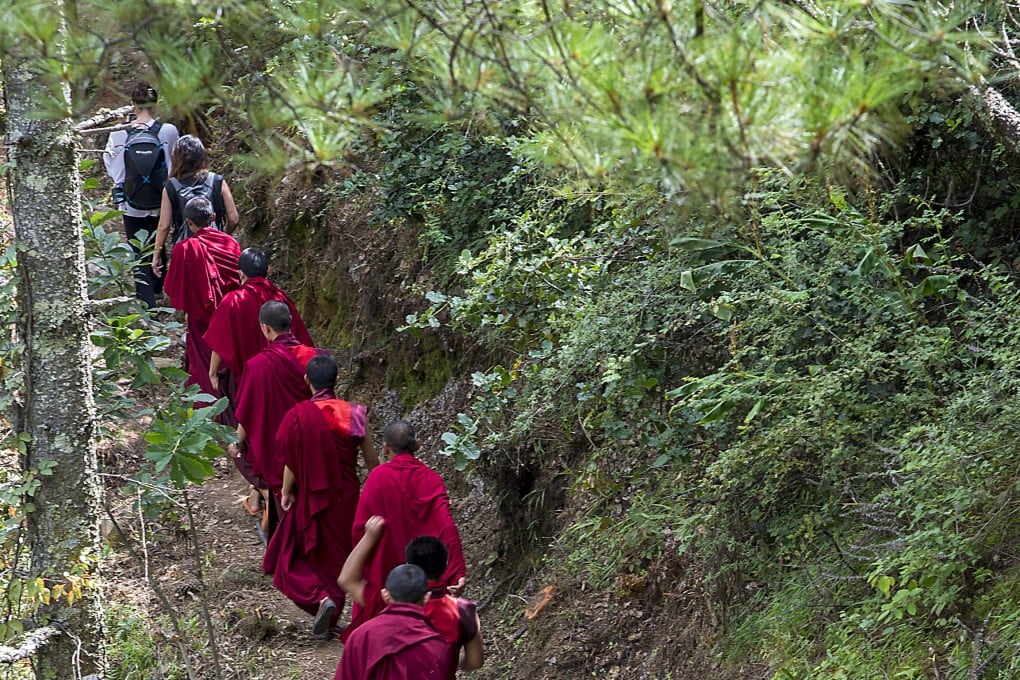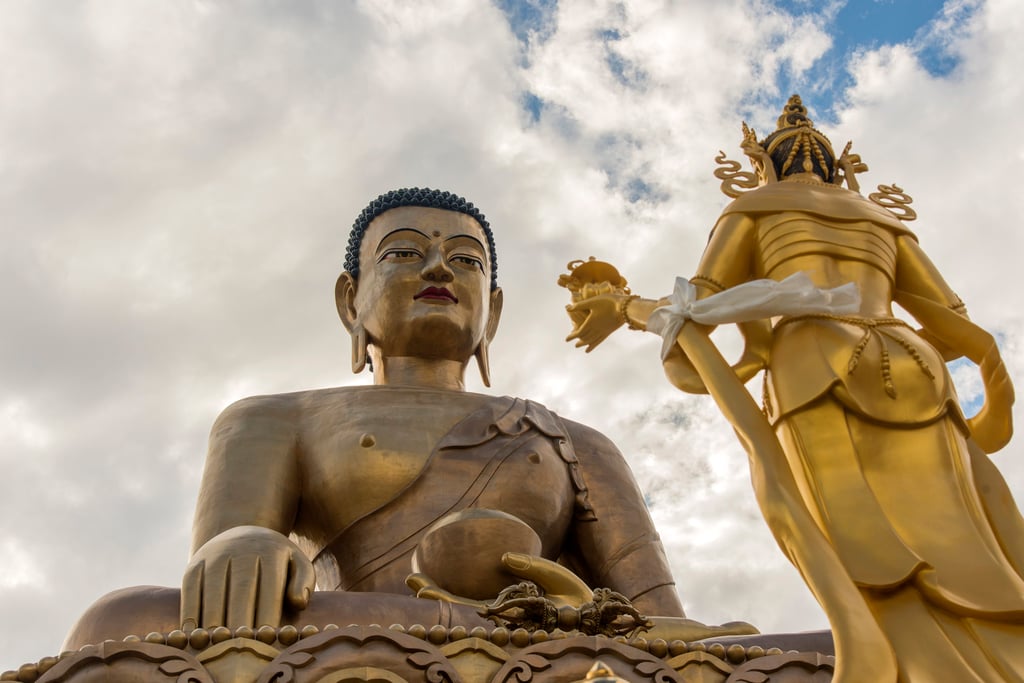Himalayan kingdom of Bhutan’s reopening of 400km Trans Bhutan Trail restores ancient link between mountains and monasteries for Bhutanese and visitors alike
- The Trans Bhutan Trail was for centuries used to get between villages in the Himalayan kingdom, but fell into disrepair after roads were built in the 1960s
- Bhutan restored the 400km path during the Covid-19 pandemic. Now visitors can hike along it to the Tiger’s Nest monastery – look out for the photobombing monks

Quick, what’s the capital of Bhutan?
No, me neither, until recently – and I’m supposed to be a travel writer.
Thimphu is low key and likeable. There’s a handicraft market, a few modest boutiques and plenty of general stores, but you don’t come to Bhutan to go shopping.
You come to learn about Buddhist rituals from scarlet-robed monks and to venture barefoot into temples and monasteries. You come to gaze at the world’s tallest seated Buddha and to feast on delicious Bhutanese dishes. You come to hike along the Trans Bhutan Trail.

The Himalayan kingdom reopened its borders on September 23 after nearly two and a half years of Covid-enforced isolation. Tourists are back and there is renewed optimism in the air, thanks in part to a 16th-century footpath.
